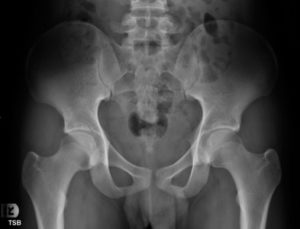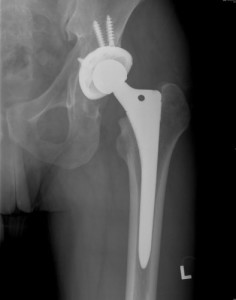
A total hip replacement is indicated for arthritis affecting the hip joint causing pain, loss of function and poor quality of life. The procedure is one of the most successful of all surgeries with a success rate of >90% in the right hands. This restores the patient’s quality of life and relieves them of the pain in their hips. The common conditions that may lead to total hip replacement include osteoarthritis, rheumatoid arthritis, osteonecrosis or avascular necrosis and post-trauma to the hip.

Dr Kevin Lee is a member of the American Association of Hip and Knee Surgeons. He does all his total hip replacement surgery via a direct lateral minimally invasive lateral approach and works only with anaesthetists specialised in pain management. Patients are expected to start walking on the 1st or 2nd day after the operation with the assistance of a frame and are discharged on the 3rd or 4th day following surgery.
In a total hip replacement (also called total hip arthroplasty), the damaged bone and cartilage is removed and replaced with prosthetic components.
- The damaged femoral head is removed and replaced with a metal stem that is placed into the hollow center of the femur. The femoral stem may be either cemented or “press fit” into the bone.
- A metal or ceramic ball is placed on the upper part of the stem. This ball replaces the damaged femoral head that was removed.
- The damaged cartilage surface of the socket (acetabulum) is removed and replaced with a metal socket. Screws or cement are sometimes used to hold the socket in place.
- A plastic, ceramic, or metal spacer is inserted between the new ball and the socket to allow for a smooth gliding surface.
After the surgery, there are several things to look out for in your daily living and home arrangements, find out more in our article on “Preparing For Life After Hip Replacement“.




Looking For A Reliable Hip Orthopaedic Specialist?
Fast Medical Attention, Transparent Fees
Make an appointment for comprehensive care for your hip problems!
